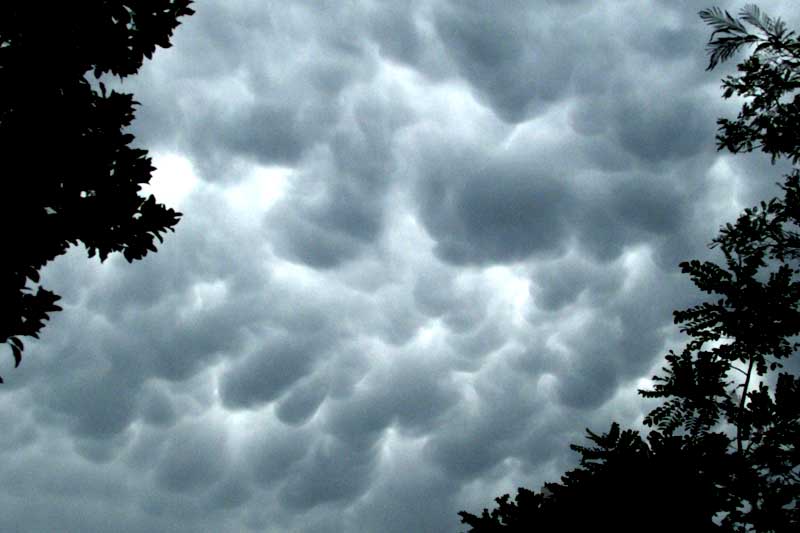Excerpts from Jim Conrad's
Naturalist Newsletter
Entry issued on July 30, 2019, from the forest just west of Tepakán; elev. ~9m (~30 ft), N21.053°, W89.052°; north-central Yucatán state, MÉXICO
MAMMATUS CLOUDS
Sometimes our early-rainy-season afternoon storms are preceded by dramatic looking clouds. As a cloud connoisseur, I was delighted this week when just after a drenching storm had ushered in some much appreciated cooler air, the unusual clouds shown below formed:

In the Clouds section of our Weather Index Page, I've been wanting to add this cloud type for a long time. It's a mammatus cloud, the term "mammatus" based on the Latin mamma, meaning "breast" or "udder." The cloud name-givers didn't fail to notice that the clouds look like breasts dangling from the sky.
Cloud types are grouped into genera and species, like living organisms. Thus, the anvil-head thunderstorm cloud is known technically as a Cumulonimbus incus cloud, the understanding being that "incus" clouds are just one type of what may be several or many of the cumulonimbus kind. The World Meteorological Organization's International Cloud Atlas considers mammatus clouds as "supplementary features" of the cloud world, not qualifying for a standardized technical name. Usually they occur in association with cumulonimbus clouds (rainclouds).
Mammatus clouds are formed by cold air sinking through warmer, uprising air, forming breast-shaped pockets in the cloud system. They're to be looked for in the vicinity of particularly severe thunderstorms, and clouds of volcanic ash. Airplane pilots are taught to avoid mammatus clouds because they indicate rough turbulence and dangerous wind shear between the uprising warm air and the mammatus' sinking cold air.
Sometimes displays of mammatus clouds are much more striking than what's shown in our photo, as you can see by doing a Google image search on the keywords "mammatus clouds." Usually mammatus formations don't last long. Ours persisted for only about five minutes, and I read that an average lobe, or breast, lasts about ten minutes, while a field of mammae can endure for a few hours.
Until this week, I'd thought that here in the tropics I'd never see mammatus clouds.